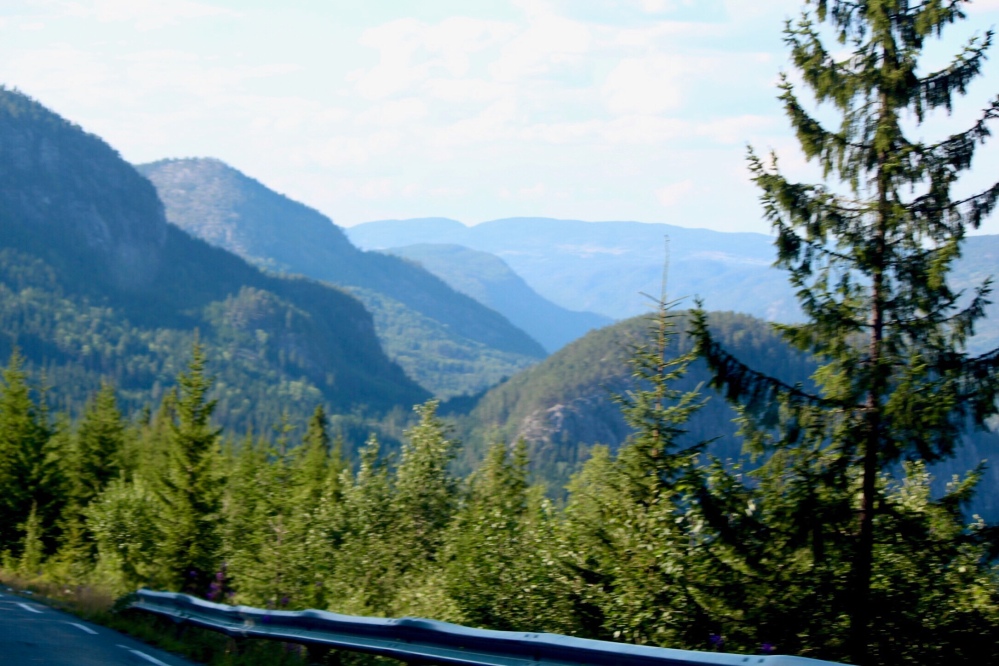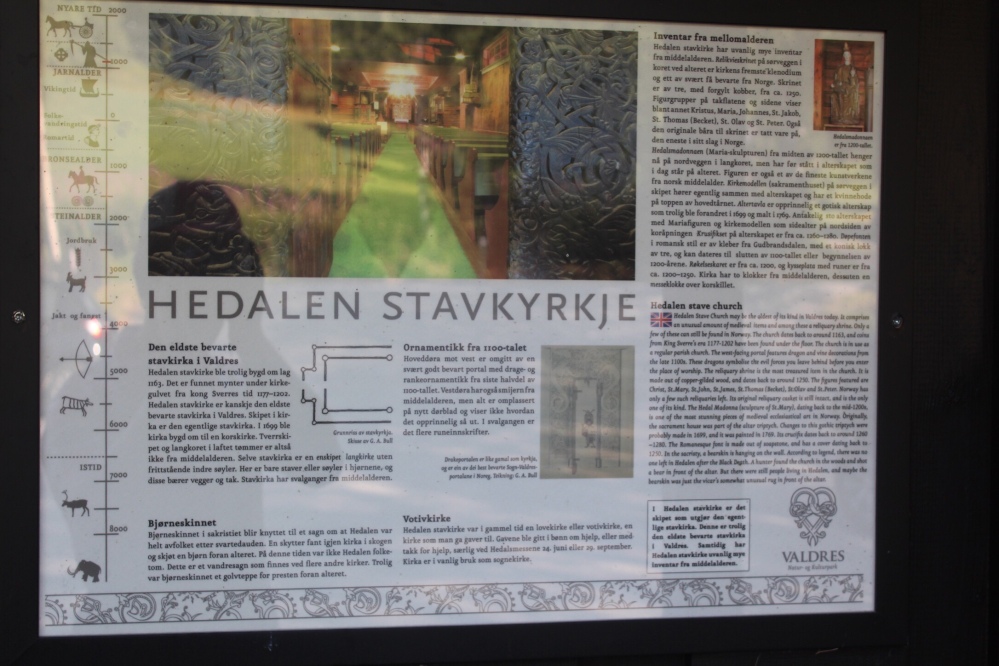After an incredible journey to the Roseth farm, Joe and I headed 2 hours west towards the town of Hedalen.
The countryside was absolutely beautiful, some of the best I have seen.
After heading up a mountainside we stopped and looked down at the valley.
Breathtaking view.


We rolled into the church later in the day, a beautiful, sunny day.
The Church was beautiful


The signage was cool

The region was filled with small towns

And the story behind this Church is incredible.

As I looked around at the gravestones for any ancestors, Joe spoke to a young woman leaving the church. She said that the church was now closed. Joe mentioned we are here searching for ancestral roots for Elianstad, to which she seemed quite interested in and she kindly said she could let us in.
She brought us into the church through the back door. The smell of the old wood and tar was incredible. She said that the black on the wood was tar used to maintain the wood.
Inside was a wood plank floor, benches in several directions, and a stillness.
Pews in 3 directions, this church is very much in use today.

As we explored the catholic symbols, our guide explained that during the reformation, people were supposed to come through and cleanse the churches of Catholic symbols, but for some reason they never made it to Hedalen, hence the catholic symbols still in the church to this day.
Also, several old Norske elements in the Church.
The history she told of the Church was pretty incredible.

The church was built in 1163.
In the 14th century, when the Black Plague came through and wiped out the towns in the area, the forest took the towns back and overgrew.
Two hundred years later, in the 16th century, a hunter traveling in the area was hunting for birds. He shot an arrow at on that missed the bird and hit the bell of the church.
As he explored this newly found Church, he saw a bear hibernating inside. The hunter killed the bear and the bear skin adorns the church wall to this day.
The church had the Bear skin carbon dated, and it is indeed from the 16th century.
She went on to explain that after the reclamation of the Church, it was a tradition, likely left over from old Norske mythology to throw iron over the church to cleanse it and ward off any bad spirits that may be there. The name Elianstad (Ldjarnstad) is a loose translation for this act of throwing the iron over the church. Where the iron landed is where the Elianstad (Ldjarnstad) Farm was built.
The Ldjarnstad (Elianstad) Farm
Gravestone for the Ldjarnstad family.

The trip to Hedalen, the Stave Church and Elianstad Farm was an incredible journey through time, and an interesting piece of where I come from.










